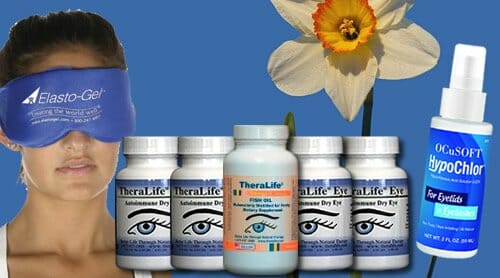How to Relief Dry Eyes, Joint Pain in Sjogren's
TheraLife Autoimmune formula is effective in reducing the frequency of joint flares and control joint pain and stiffness. See testimonials for more details.
Let’s examine the various joint pains associated with varies Sjogren’s Syndrome
A. Primary Sjogren’s Syndrome:
Joint pain can occur in the absence of rheumatoid arthritis ( RA factor of blood being negative) in people with primary Sjogren’s Syndrome. This kind of joint pain is usually associated with Polyarthritis, Arthralgia alone or Fibromyalgia.Fibromyalgia
Some people with Sjogren’s Syndomre may have joint pain as a result of fibromyalgia. However, fibrmyalgia arises from the muscles, which may be perceived as coming from the joints. Fibromyalgia pain is present on a nearly daily basis, with flares of increased pain triggered by increased exertion, lack of sleep and stress.
The arthritis of primary Sjogren’s is mildly inflammatory and a manifestation to the systemic autoimmune disease. The factors that causes this joint pain include immune complexes, or inflammatory mediators (such as cytokines- which induce physiologic changes in various tissues). The immune reaction may be directed specifically at a structural component of the joint, there by inciting an inflammatory response.
B. Secondary Sjogren’s Syndrome: Rheumatoid Arthritis and Lupus+ Sjogren’s
Secondary Sjogren’s have an underlying systemic rheumatic disease, such as rheumatoid arthritis (RA), systemic lupus erythematosus , or scleroderma. Arthritis is a prominent feature of these systemic rheumatic diseases. The distinction between primary Sjogrens with arthritis and Sjogrens occurring in the setting of rheumatoid arthritis or systemic lupus can be difficult. Both sets of people may have positive tests for rheumatoid factor ( RA) and antinuclear antibodies ( ANA), markers of RA and Lupus respectively. Additionally a positive CCP (cyclic citrullinated peptide) antibody test in a primary Sjogrens’ does not always imply the presence of rheumatoid arthritis. In general, secondary Sjogrens occurs in rheumatoid arthritis who have had the disease for many years. Systemic lupus is diagnosed when certain types of medical problems occur together, such as specific rashes, inflammation of the lung or heart lining, inflammation of the kidney (glomerulonephritis) and blood abnormalities ( low white counts, low platelets, or anemia).
C. Sicca Syndrome- dry eye/dry mouth
Some people have dryness of their eyes and mouth but do not have any signs of an underlying autoimmune disease. Since they don’t have positive SS-A and /or SS-B antibodies and do not have a positive lip biopsy. They are often not labeled as Sjogren’s. These people often have joint pain. Sometimes, medications that block estrogen production (treatment for breast cancer) can give rise to Menopausal Arthritis.Natural Alternative Relief for Autoimmune Related Joint Pain:
- TheraLife Autoimmune –contain ingredients that: - targets intracellular stimulation of both tear and salivary secretion glands.
- strongly regulates the immune system to control and reduce flares;
- strongly anti-inflammatory;
- all natural without the side effects of potent drugs. See more details below.
- Moist Heat to the hands with a paraffin bath can help relieve stiffness of the fingers and wrists in the morning
- Gentle exercise, including Tah Chi, yoga and dancing can strengthen muscles and preserve joint range of motion.
- Nutritional supplements, such as glucosamine or fish oils, also may help some people
- Diet- use elimination diet to reveal certain food that aggravate joint pain. Start with elimination of diary, bread, or excessive salt can reduce joint pain in some individuals.
Testimonials
I was diagnosed with Sjogren’s Syndrome 4 years ago. Nothing reallyworked for me in the past, until a friend recommended me to TheraLife.
After 2 months, my eyes, dry mouth and joint pain had improved so much. - J.K. Reno, NV
---------------------------------------------------------------------------------
I am a 45 yr old women who has Sjogrens Syndrome and Rheumatoid
Arthritis. I have had many eye ulcerations due to dry eyes. Ointments, all kinds of eye drops
were not helping. I could not stand to go outside due to the sensitivity to the sunlight, could not goto movies and was in constant pain.
_______________________________________________________
I was desperate for relief of any kind. I came across Theralife on the internet
and thought why not give it a try! Within 3-4 weeks I noticed a difference. No more joint pain.
It has improved my quality of life quite a bit. I'm so happy I found this product,
I can’t be without it.! - D. , Billings, Montana
 |































